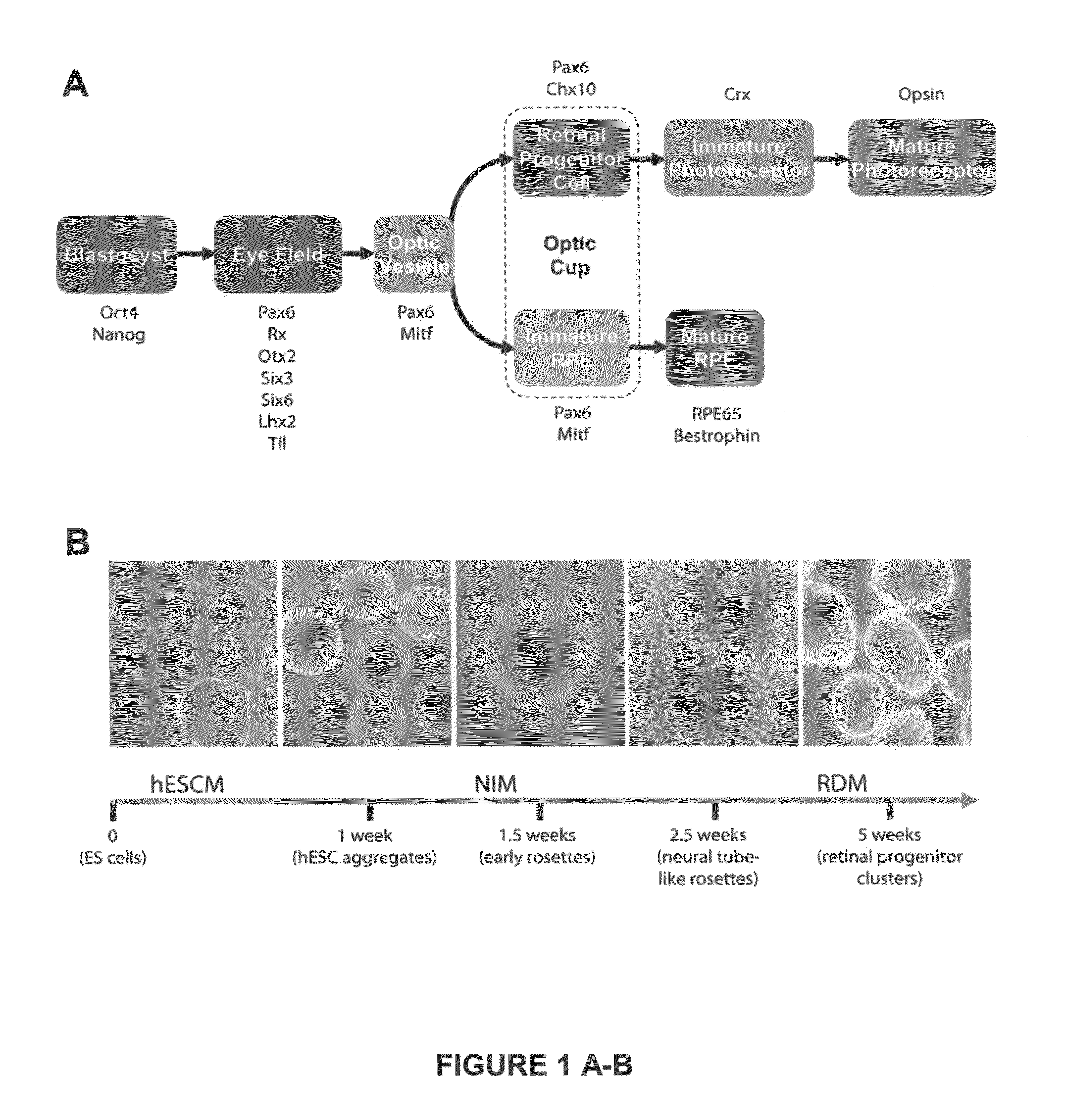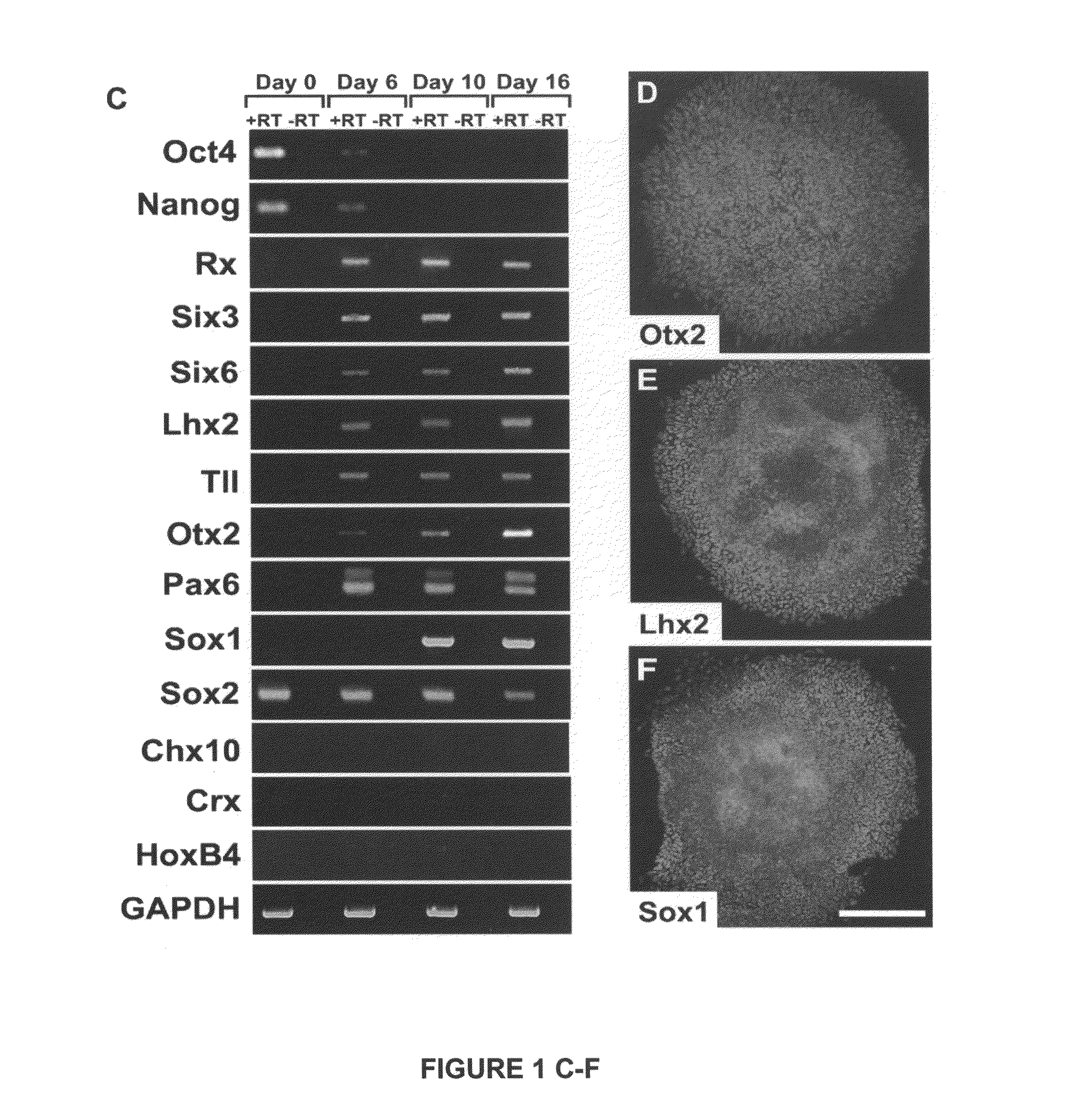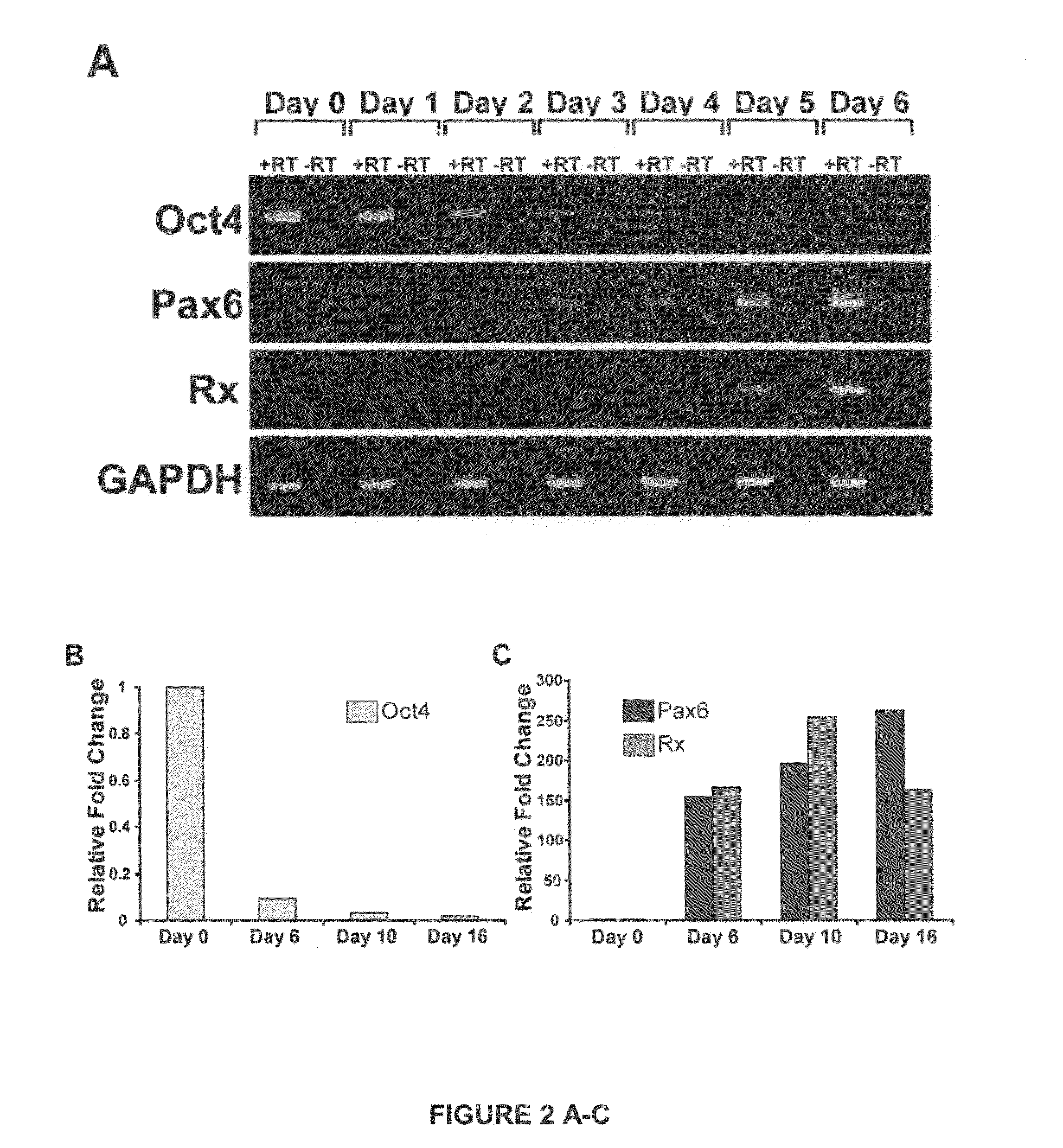Substantially pure human retinal progenitor, forebrain progenitor, and retinal pigment epithelium cell cultures and methods of making the same
a retinal pigment and cell culture technology, applied in the field of substantially pure human retinal progenitor, forebrain progenitor, retinal pigment epithelium cell culture and methods of making the same, can solve the problems of limited treatment options, no cure, and few therapeutic options, and progressive vision loss
- Summary
- Abstract
- Description
- Claims
- Application Information
AI Technical Summary
Benefits of technology
Problems solved by technology
Method used
Image
Examples
example 1
Modeling Early Retinal Development with Human ESC and iPSC
[0069]We demonstrate below that cell fate specification and maturation from human ESC of definitive retinal cell populations follows a sequence and time course highly reminiscent of normal retinal development. We also demonstrate that retinal differentiation can be selectively altered by manipulating endogenous developmental signaling pathways. Additionally, we show that an identical cohort of developing retinal cell types can be generated from human iPSC, although variation can occur between lines. Cell populations expressing morphologic features and / or markers of the eye field, RPE, neural retinal progenitors, photoreceptor precursors and photoreceptors were observed in cultures of cells differentiated from human iPSC at time points predicted by results using human ESC.
[0070]The findings presented here demonstrate that human ES cells and human iPSC can differentiate in vitro into cells having signature features associated w...
example 2
Additional Aspects of the Methods Disclosed in Example 1 to Separate Neuroepithelial Lineage Cells by Progenitor Cell Type
[0123]Introduction
[0124]Previous studies have demonstrated the ability of hPSCs (human pluripotent stem cells, which include both hESCs and hiPSCs) to differentiate towards the retinal lineage. However, these retinal cells have often been found within a mixed population of cells that have either been unidentified or of a non-retinal lineage. This feature has complicated studies of the cell fate decisions leading to the development of the retina, particularly because many characteristics typically used to identify retinal cell types within the retina are often shared throughout the central nervous system. When these cells are derived from a pluripotent cell source such as hESCs or hiPSCs, the mere expression of these characteristics does not sufficiently identify them as definitively of a retinal nature. Thus, it would be necessary to be able to identify and enric...
PUM
| Property | Measurement | Unit |
|---|---|---|
| diameter | aaaaa | aaaaa |
| temperature | aaaaa | aaaaa |
| morphology | aaaaa | aaaaa |
Abstract
Description
Claims
Application Information
 Login to View More
Login to View More - R&D
- Intellectual Property
- Life Sciences
- Materials
- Tech Scout
- Unparalleled Data Quality
- Higher Quality Content
- 60% Fewer Hallucinations
Browse by: Latest US Patents, China's latest patents, Technical Efficacy Thesaurus, Application Domain, Technology Topic, Popular Technical Reports.
© 2025 PatSnap. All rights reserved.Legal|Privacy policy|Modern Slavery Act Transparency Statement|Sitemap|About US| Contact US: help@patsnap.com



